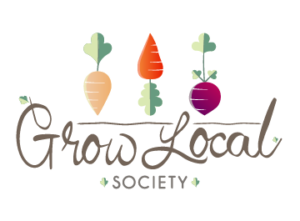Here at the Coquitlam Farmers Market we are all about local, seasonal and sustainably grown produce. What better way to celebrate the summer months than a fresh take on some familiar foods! This week’s topic: garlic.
 Did You Know?
Did You Know?
Although garlic is native to central Asia, did you know China is currently its largest producer?
Each bulb of garlic contains many nutrients, including potassium, iron, calcium, and Vitamin C.
Garlics’ health benefits date back centuries and is believed the help reduce cholesterol and blood pressure!
The end Garlic’s growing season in South West British Columbia ends in October but can be stored for months after harvest! Make sure you stop by the market this Sunday to try some of the province’s best!
Recipe of the Week
Roasted-Garlic Bread
Courtesy of MARTHA STEWART LIVING
Ingredients:
1/2 cup Roasted Garlic
1 tablespoon cooking oil
Coarse salt and ground pepper
1 loaf rustic French or Italian bread
Directions:
Step 1- Preheat oven to 400 degrees. In a small bowl, mash roasted garlic and cooking oil to a coarse paste with a fork.
Step 2- Split bread horizontally and spread garlic paste evenly on cut sides. Season generously with salt and pepper.
Step 3- Place bread on a rimmed baking sheet and bake until garlic is golden and edges of bread are crisp, 20 to 25 minutes.
Step 4- Cut into wedges for serving.
Roasted- Garlic Mashed Potatoes
Courtesy of MARTHA STEWART LIVING
Ingredients:
2 heads garlic
1 teaspoon olive oil
3 pounds potatoes, scrubbed and cut into 1-inch cubes
Coarse salt and ground pepper
1 cup half-and-half
4 tablespoons butter
Directions:
Step 1- Preheat oven to 400 degrees. Cut off and discard top quarter of garlic heads. Drizzle garlic with oil; wrap in foil. Bake until tender, 1 hour. Squeeze out garlic cloves; discard skins.
Step 2- Place potatoes in a large saucepan, and cover with cold water by 1 inch; season with salt. Bring to a boil; reduce to a simmer. Cook until potatoes are easily pierced with a paring knife, 15 to 20 minutes.
Step 3- Drain, and return to pan. Heat over medium, stirring, until a thin starchy film covers bottom of pan. Remove from heat; add half-and-half, butter, and garlic. Mash until smooth; season with salt and pepper.
Ingredients at the Market
Garlic: Ripple Creek Organic Farm, Forstbauer Farm
Potatoes: Forstbauer Farms
Bread: A Bread Affair
Other Greens and Vegetables: Forstbauer Farms, Ripple Creek Organic Farm, From Beds to Bowls Farm
Steps on How To Grow
Garlic Planting 101:
Step 1- It is recommended to grow garlic in the fall but it can be planted in early spring. A few days before you plant, break apart the cloves from its bulb but do not remove the husks.
Note: It is not recommended that you plant from store bought bulbs. Make sure you buy from a local nursery or farmers market and choose a variety that suits your growing environment.
Step 2- Make sure the space you have chosen to plant is well-drained with plenty of organic matter. If not you may choose to add organic fertilizer or mulch. Also, ensure the place where you are going is sunny.
Note: If you notice the leaves of your plants have a yellow hue, add fertilizer.
Step 3- Place cloves 4 inches apart and 2 inches deep, in their upright position. Make sure the wide root side facing down and pointed end facing up.
Step 4- During the colder, frost months, add a heavy amount of mulch. Water about 3-5 days during warmer months.
Step 5- Once you see the tip of your plants have a yellow colour and they begin to fall, it is time to harvest. Another indicator is the leaves drying out.
Note: Ensure you do not harvest too early. You want to make sure your bulb is a mature size and the wrapping quality is good.
Step 6- Carefully lift the bulbs with a spade or garden fork. Pull the plants, carefully brush off the soil, and let them cure in an airy, shady spot for two weeks. Then hang them upside down on a string in bunches of four to six.
Garlic in B.C.
B.C.’s climate is perfect for growing garlic! Dozens of local farmers produce this easy to grow crop.
To note: There many types of garlic. But the 2 main categories are soft neck and hardneck.
In BC, hardneck is the most common category, as it is planted in October and is harvested in July. What is great about this kind as it produces a delicious edible scape in June to be snatched off and eaten!
Soft neck can be planted here, but it is usually the type purchased in a local grocery store. But, planting softneck garlic can give you the ability to create garlic braids! Yes! So pick your type to grow and have fun!
